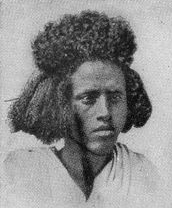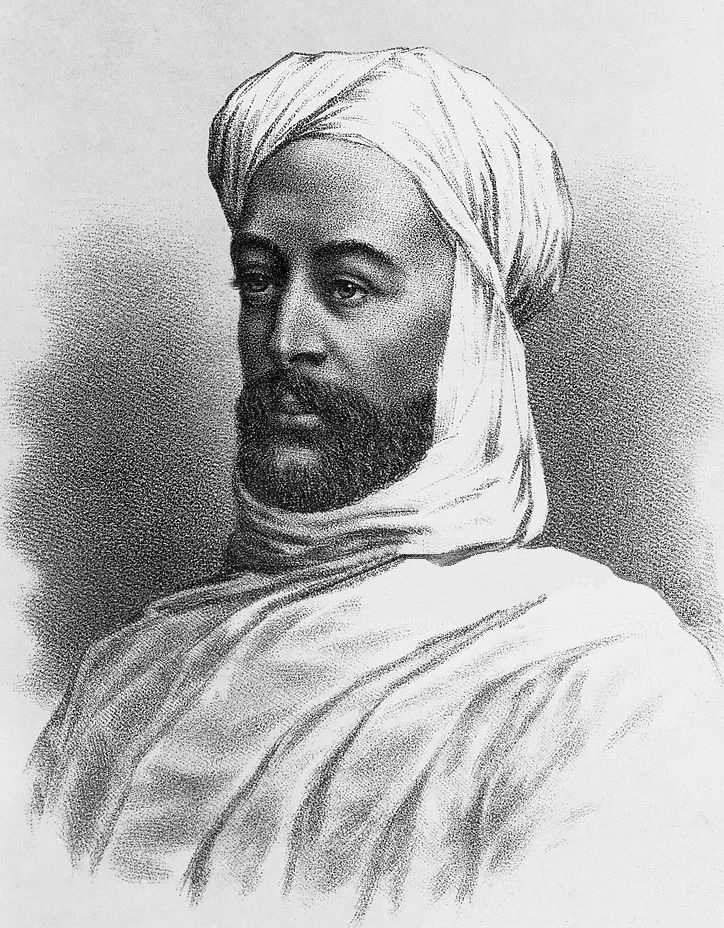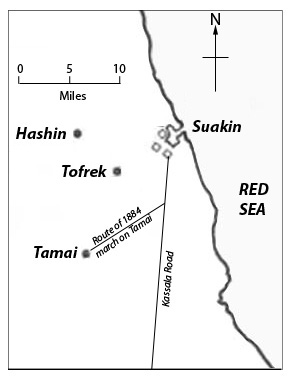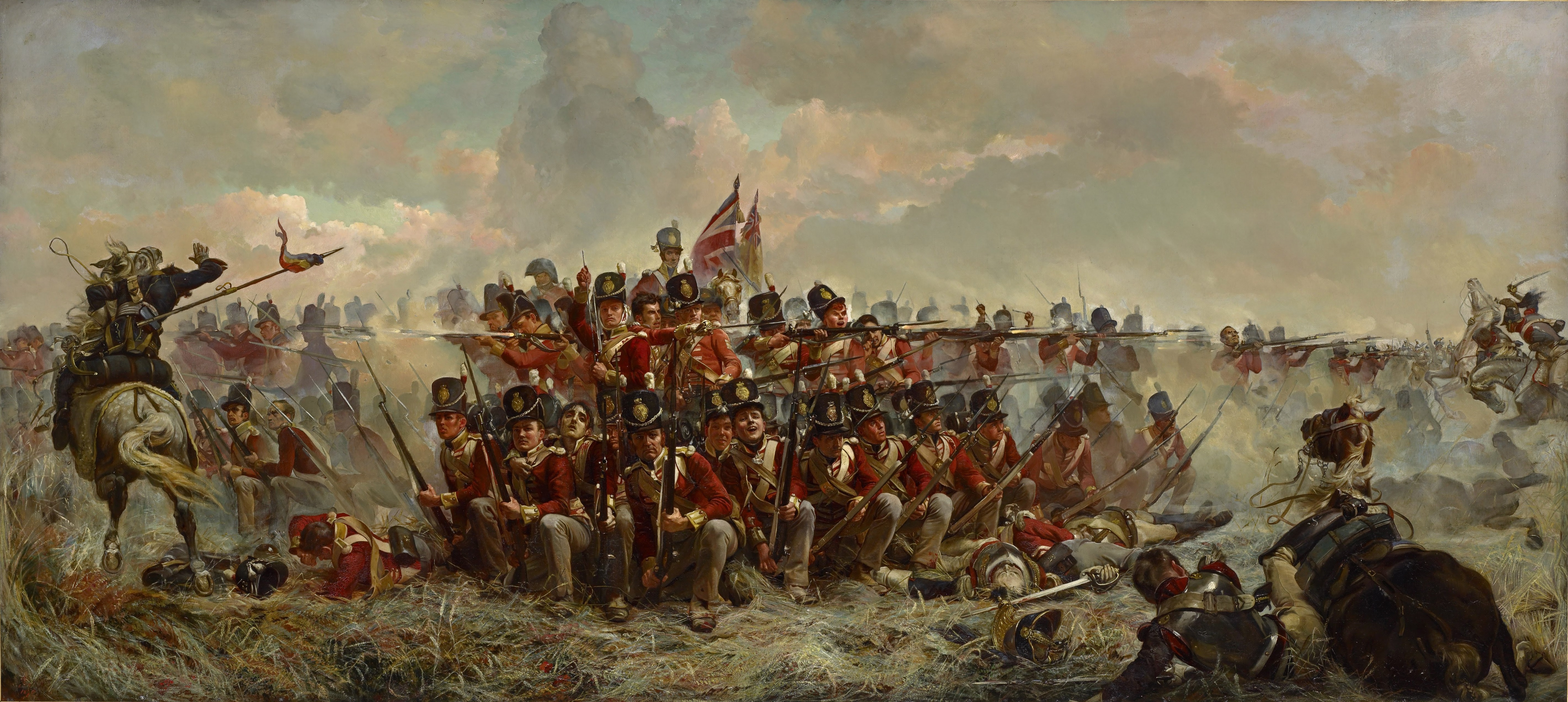|
Hadendoa
Hadendoa (or Hadendowa) is the name of a nomadic subdivision of the Beja people, known for their support of the Mahdiyyah rebellion during the 1880s to 1890s. The area historically inhabited by the Hadendoa lies today in parts of Sudan, Egypt and Eritrea. Etymology According to Roper (1930), the name ''Haɖanɖiwa'' is made up of ''haɖa'' 'lion' and ''(n)ɖiwa'' 'clan'. Other variants are ''Haɖai ɖiwa'', ''Hanɖiwa'' and ''Haɖaatʼar'' (children of lioness). Language The language of the Hadendoa is a dialect of Bedawi. History The southern Beja were part of the Christian kingdom of Axum during the sixth to fourteenth centuries. In the fifteenth century, Axum fell to the Islamization of the Sudan region, and although the Beja were never entirely subjugated, they were absorbed into Islam via marriages and trade contracts. In the seventeenth century, some of the Beja expanded southward, conquering better pastures. These became the Hadendoa, who by the eighteenth century we ... [...More Info...] [...Related Items...] OR: [Wikipedia] [Google] [Baidu] |
Fuzzy-Wuzzy
"Fuzzy-Wuzzy" is a poem by the English author and poet Rudyard Kipling, published in 1892 as part of '' Barrack Room Ballads''. It describes the respect of the ordinary British soldier for the bravery of the Hadendoa warriors who fought the British army in the Sudan and Eritrea. Background "Fuzzy-Wuzzy" was the term used by British soldiers for Beja warriors who were supporting the Mahdi of Sudan in the Mahdist War. The term relates to the elaborate ''tiffa'' hair style favoured by the Hadendoa tribe, a subdivision of the Beja people. The Beja people were one of several broad multi-tribal groupings supporting the Mahdi, and were divided into six tribes: Hadendoa, Halanga, Amarar, Beni-Amer, Habab, and Bishariyyin. All of these are semi-nomadic and inhabit the Sudan's Red Sea Hills, Libyan Desert, and southern Egypt. The Beja provided a large number of warriors to the Mahdist forces. They were armed with swords and spears and some of them carried breech-loaded rifles whi ... [...More Info...] [...Related Items...] OR: [Wikipedia] [Google] [Baidu] |
Beja People
The Beja people ( ar, البجا, Beja: Oobja, tig, በጃ) are an ethnic group native to the Eastern Desert, inhabiting a coastal area from southeastern Egypt through eastern Sudan and into northwestern Eritrea. They are descended from peoples who have inhabited the area since 4000 BC or earlier, although they were Arabized by Arabs who settled in the region. They are nomadic, and live primarily in the Eastern Desert. They number around 1,900,000 to 2,200,000 people. Most of the Beja speak Arabic, while some speak the Cushitic language of Beja and the Semitic language of Tigre. In Eritrea and southeastern Sudan, many members of the Beni-Amer grouping speak Tigre. Originally, the Beja did not speak Arabic, however the migration of the numerous Arab tribes of Juhaynah, Mudar, Rabi'a, and many more to the Beja areas contributed to the Arabization and Islamization of them, however the Arabs did not fully settle in the Beja areas as they looked for better climate in other ar ... [...More Info...] [...Related Items...] OR: [Wikipedia] [Google] [Baidu] |
Battle Of Tamai
The Battle of Tamai (or Tamanieh) took place on 13 March 1884 between a British force under Sir Gerald Graham and a Mahdist Sudanese army led by Osman Digna. Despite his earlier victory at El Teb, Graham realised that Osman Digna's force was far from broken and that he still enjoyed support among the local population. Accordingly, a second expedition departed from Suakin on 10 March in order to defeat the Mahdists definitively. The force was composed of the same units that had fought at El Teb: 4,500 men, with 22 guns and 6 machine guns. The Mahdists had roughly 10,000 men, most of them belonging to Osman Digna's Hadendoa tribe (known to British soldiers as " Fuzzy Wuzzies" for their unique hair). Forces The British forces involved in the battle were: * Squadron from 10th Hussars * Squadron from 19th Hussars * 1st Battalion, The Black Watch (Royal Highlanders) * 3rd Battalion, The King's Royal Rifle Corps * 1st Battalion, York and Lancaster Regiment * 1st Battalion, Gordo ... [...More Info...] [...Related Items...] OR: [Wikipedia] [Google] [Baidu] |
Osman Digna
Osman Digna ( ar, عثمان دقنة) (c.1840 – 1926) was a follower of Muhammad Ahmad, the self-proclaimed Mahdi, in Sudan, who became his best known military commander during the Mahdist War. He was claimed to be a descendant from the Abbasid family. As the Mahdi's ablest general, he played an important role in the fate of General Charles George Gordon and the loss of the Sudan to Turkish-Egyptian rule. In Britain, Osman Digna became a notorious figure, both demonised as a savage and respected as a warrior. Winston Churchill described him as an "astute" and "prudent" man, calling him "the celebrated, and perhaps immortal, Osman Digna." Mahdist leader Osman Digna's father was a Kurd and his mother hailed from the Hadendoa tribe of the Beja people. His birthplace is not documented, but Suakin was said to be the town, where he was born. He was originally known as Osman Ali. He lived in Alexandria, Egypt, where he dealt in the selling of slaves. After the English forced him ... [...More Info...] [...Related Items...] OR: [Wikipedia] [Google] [Baidu] |
Bisharin Tribe
The Bishari (, or , romanized: ; Beja: ) are an ethnic group who live in parts of Northeast Africa. They are one of the major divisions of the Beja people. Apart from local dialects of Arabic, the Bishari speak the Beja language, which belongs to the Afroasiatic family. Demographics The Bishari live in the eastern part of the Nubian Desert in Sudan and southern Egypt. They reside in the Atabai (also spelled Atbai) area between the Nile River and the Red Sea, north of the Amarar and south of the Ababda people between the Nubian desert and the Nile valley, an area of limestone, mountains, with sandstone plateaus. The Bishari population numbers around 42,000 individuals. Most people of the tribe move within the territory of Sudan, where members have political representation in the Beja Congress. Language The Bishari speak the Beja language as a mother tongue. It belongs to the Cushitic branch of the Afroasiatic family. The Beja inhabiting Sudan also speak Sudanese Ara ... [...More Info...] [...Related Items...] OR: [Wikipedia] [Google] [Baidu] |
Mahdist Sudan
The Mahdist State, also known as Mahdist Sudan or the Sudanese Mahdiyya, was a state based on a religious and political movement launched in 1881 by Muhammad Ahmad bin Abdullah (later Muhammad al-Mahdi) against the Khedivate of Egypt, which had ruled the Sudan since 1821. After four years of struggle, the Mahdist rebels overthrew the Ottoman-Egyptian administration and established their own "Islamic and national" government with its capital in Omdurman. Thus, from 1885 the Mahdist government maintained sovereignty and control over the Sudanese territories until its existence was terminated by the Anglo-Egyptian forces in 1898. Mohammed Ahmed al-Mahdi enlisted the people of Sudan in what he declared a jihad against the administration that was based in Khartoum, which was dominated by Egyptians and Turks. The Khartoum government initially dismissed the Mahdi's revolution; he defeated two expeditions sent to capture him in the course of a year. The Mahdi's power increased, and his ... [...More Info...] [...Related Items...] OR: [Wikipedia] [Google] [Baidu] |
Rudyard Kipling
Joseph Rudyard Kipling ( ; 30 December 1865 – 18 January 1936)''The Times'', (London) 18 January 1936, p. 12. was an English novelist, short-story writer, poet, and journalist. He was born in British India, which inspired much of his work. Kipling's works of fiction include the ''Jungle Book'' duology ('' The Jungle Book'', 1894; '' The Second Jungle Book'', 1895), ''Kim'' (1901), the '' Just So Stories'' (1902) and many short stories, including "The Man Who Would Be King" (1888). His poems include " Mandalay" (1890), " Gunga Din" (1890), "The Gods of the Copybook Headings" (1919), " The White Man's Burden" (1899), and "If—" (1910). He is seen as an innovator in the art of the short story.Rutherford, Andrew (1987). General Preface to the Editions of Rudyard Kipling, in "Puck of Pook's Hill and Rewards and Fairies", by Rudyard Kipling. Oxford University Press. His children's books are classics; one critic noted "a versatile and luminous narrative gift".Rutherford, Andrew ( ... [...More Info...] [...Related Items...] OR: [Wikipedia] [Google] [Baidu] |
Battle Of Tofrek
The Battle of Tofrek was fought on 22 March 1885 some 5 miles inland from the port of Suakin on the Red Sea coast of Sudan. A contingent of some 3000 troops from the British and Indian "Suakin Field Force" led by Major General Sir John Carstairs McNeill VC, GCVO, KCB, KCMG (under the overall command of General Gerald Graham) was attacked by a Mahdist force under the leadership of Osman Digna. The Mahdists were heavily defeated, losing some 1000 of their 2000 fighters as compared to the loss of 70 British and Indian soldiers plus over 100 casualties. Background The sacking of Khartoum and the killing of General Gordon and the massacre of thousands of civilians at the hands of Mahdist warriors in January 1885, together with the failure of the relief effort of General Wolseley's Nile Expedition, prompted the British government to revive plans to build a railway between the port of Suakin on the Red Sea and Berber on the River Nile some 300 miles north of Khartoum, to provide ... [...More Info...] [...Related Items...] OR: [Wikipedia] [Google] [Baidu] |
The Atlantic
''The Atlantic'' is an American magazine and multi-platform publisher. It features articles in the fields of politics, foreign affairs, business and the economy, culture and the arts, technology, and science. It was founded in 1857 in Boston, as ''The Atlantic Monthly'', a literary and cultural magazine that published leading writers' commentary on education, the abolition of slavery, and other major political issues of that time. Its founders included Francis H. Underwood and prominent writers Ralph Waldo Emerson, Oliver Wendell Holmes Sr., Henry Wadsworth Longfellow, Harriet Beecher Stowe, and John Greenleaf Whittier. James Russell Lowell was its first editor. In addition, ''The Atlantic Monthly Almanac'' was an annual almanac published for ''Atlantic Monthly'' readers during the 19th and 20th centuries. A change of name was not officially announced when the format first changed from a strict monthly (appearing 12 times a year) to a slightly lower frequency. It was a mo ... [...More Info...] [...Related Items...] OR: [Wikipedia] [Google] [Baidu] |
Infantry Square
An infantry square, also known as a hollow square, was a historic combat formation in which an infantry unit formed in close order, usually when it was threatened with cavalry attack. As a traditional infantry unit generally formed a line to advance, more nimble cavalry could sweep around the end of the line and attack from the undefended rear or burst through the line, with much the same effect. By arranging the unit so that there was no undefended rear, a commander could organise an effective defense against a cavalry attack. With the development of modern firearms and the demise of cavalry, that formation is now considered obsolete. Early history The formation was described by Plutarch and used by the Ancient Romans; it was developed from an earlier circular formation. In particular, a large infantry square was used by the Roman legions at the Battle of Carrhae against Parthia, whose armies contained a large proportion of cavalry. That is not to be confused with the testudo for ... [...More Info...] [...Related Items...] OR: [Wikipedia] [Google] [Baidu] |








